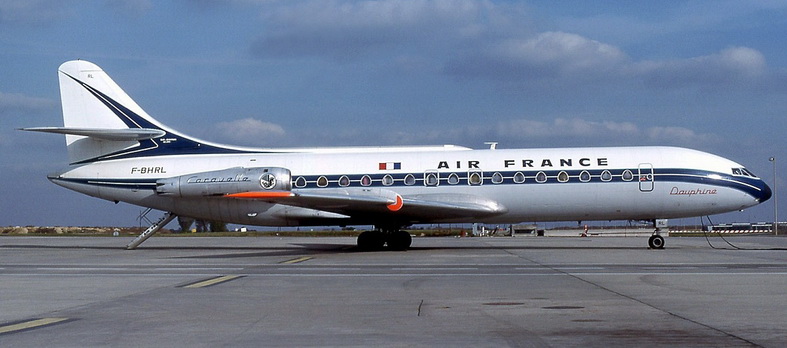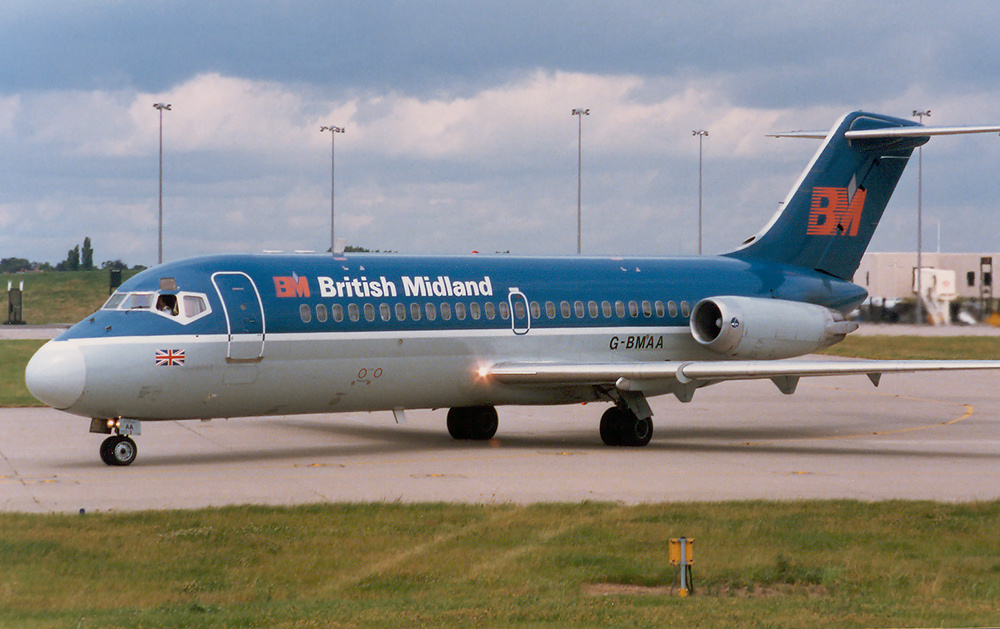1950-1970
1950-1970
During the 1950’s, the introduction of the new reliable jet planes, such as the Boeing 707 and the Douglas DC-8 which were I put into service in the late 50’s created a new era in aviation history-the jet ear. These new planes offered a lot more speed and better comfort for the passengers. These jet planes and their jet engines were less expensive than the piston-engine (the engines that have been stated before are all piston-engines) aircraft to operate making it a better option especially for long distance routes. The introduction of the jet planes into the commercial side of aviation changed the entire structure and the way the industry was managed. It also affected ground operations like fuelling and boarding the passengers as the aircraft were very different to what they were used too.
The rapid increase of jets in the commercial aviation, it revolutionized how the airlines looked at short-distance route as the norm back then was long-distance. If you wanted to go short-distance, it was normal to catch a train or drive. Since people were used to long-distance flights, the airline companies faced the challenge of transferring the appeal of the new jets like their speed, comfort and reliability to much shorter distances. It was see back then the linger flights would give a more relaxing comfortable journey as it was not as rushed compared to short distances. It was difficult as the older jets had such a high fuel consumption which made it profitable only when the plane flew longer distances at high cruising speeds with a high annual use. The first aircraft that took this into consideration was built by the French known as Caravelle built by the Sud-Est Aviation Company. Air France flew this thin two-engine aircraft since 1959 and then in July 1961, United Airlines used this aircraft on its New York-Chicago route as it was a success and to into consideration fuel consumption and short-route distances.
The Sud Aviation SE 210 Caravelle was the world’s first short/medium-range jet airliner which was produced by the French Sud Aviation firm. Its maiden flight occurred in 1955 when the company was known by the name of SNCASE. The Caravelle was one of the most successful European first-generation jetliners. It sold all over Europe and even got sales in America with an order of 20 aircraft from United Airlines. The Caravelle was the first aircraft to have the engines mounted on the back giving it a clean-wing design which has now been used in a wide variety of aircraft. The first Caravelle was roughly 32 meters long and cold hold up to 80 passengers. Its cruising speed was 600km/h. There were 282 built and the aircraft retired from service in 2004.

Taking the idea and the design of the Caravelle, Boeing decided to build the 727 which was a larger and faster jet with three engines. It was the perfect plane for both medium and short distance routes. Eastern Air Lines started using the Boeing 727 on its Philadelphia-Washington-Miami route on the 1st of February 1964. Only five days later United started using the 727 on its San-Francisco route. What makes the 727 a major aircraft in the aviation history is that it entered service with the Big Four- the largest domestic U.S passenger carries; Eastern, Unites, American and Trans World Airlines all in a matter of four months. This was unheard of meaning that the 727 had real significance and was a major shout for the airline companies. By 1970, the Boeing 727 was one of the most accomplished aircraft of the jet-era and became the fastest-selling commercial jet plane in the world. It was the first ever aircraft for a commercial jet plane to ever pass the 1,000 sales mark and by the mid 1970’s as many as 60 airliners all over the world were flying the 727. Douglas also offered its own DC-9 to compete with the 727 on short-distance routes. After entering into service in 1965 with Delta airlines, the DC-9 sold large numbers around the world.
The Boeing 727 is a mid-size narrow-body three-engine jet aircraft built by Boeing Commercial Airplanes from the early 60’s to 1984. The plane can hold up 149 to 189 passengers and the later models of the aircraft could fly up to 2,700 nautical miles or 5,000km nonstop. Since it was intended for short and medium-length flights, the aircraft has been designed so that it can fairly short runways like in the smaller airports. The 727 has three Pratt & Whitney JT8D engines, one on each side of the rear fuselage and another centre engine that was sitting on top of the fuselage connected to the tail wing. The 727 is Boeing’s only tri-jet aircraft. It followed the 707, a quad-jet airliner, with which it shares its upper fuselage cross-section and cockpit design. There were 1,832 727 manufactured and one aircraft cost about $4.25 million initially but then in 1982 it was $22 million. One thing that was very annoying about the Boeing 727 was that it was one of the noisiest commercial jetliners every that in the late 70’s it had to be fitted with hush kits which was a device that reduced the sound of the engine.

The McDonnell Douglas DC-9 was a twin-engine, single-aisle jet airliner. It was manufactured in 1965 with its maiden flight that same year. It was designed for constant and frequent, short flights. Its introduction was in December on the 8 in 1965 with Delta Air Lines. The DC-9 was a commercial success with 976 built when production ended in 1982. The DC-9 is one of the longest-lasting aircraft in operation. If you take all the different DC-9 variants, the DC-9 family is of the most successful jet airliners with a total of 2,400 units produced; it ranks third behind the second-place Airbus A320 family with over 6,000 produced, and the first-place Boeing 737 with over 8,000 produced. (These aircraft like the a320 and 737 will be explained later on). The plan could carry up to a maximum of 139 passengers. Its top speed was 898km/h and had a range of 2,632km. It had a length of 40.72 meters. The aircraft costed $41.5 to $48.5 million.

Another major advance in the aviation industry was the introduction of the wide-body jets. Pam American played a key role in the economics and the actual design of a new generation of jets. Pam American’s goal was always to have lower operating costs by having higher block speeds, higher aircraft use or higher load capacities. They wanted to be a cheap airline but with style and luxury. Having succeeding in all of those factors, Pam American’s famous guiding manager Juan Trippe began looking for the only remaining option which was a massive aircraft capable of carrying hundreds of passengers that would be an ocean liner for the skies or the big bird. By working with Boeing and telling him the certain specifications and capabilities that he and Pam American were looking for, they eventually created the shape of Boeing’s new aircraft called the 747. This plane was made to carry up to 490 passengers, way more than any other aircraft at that time. Trippe ordered 23 passenger 747’s for Pam American in April 1966. Although Boeing encountered many problems along the way. They struggled with the weight of the aircraft, its engines, and its size but eventually the company successfully delivered its first flight model in December 1969. Pam Am (short) intended to have flights up and ready over the Atlantic by December but there were engine failures and it was delayed until January 22, 1970 when the Boeing 747 took off from New York JFK and headed over the Atlantic.
The Boeing 747 is a wide-body commercial jet airliner and cargo aircraft, often referred to by its original nickname, Jumbo Jet, or Queen of the Skies. Its distinctive “hump” or upper deck, the double decked aircraft, along with the forward part of the plane makes it among the world’s most recognisable aircraft. It was the first every wide-body aircraft produced. Over the years there have been many 747’s. The first and the oldest being the 747-100 (1967) costing $24million, then the 747-200 (1976) costing $39 million, 747-300 (1982) costing $89 million, 747-400 (2007) costing $228-260 million and the most recent from 2015 the 747-8 costing $352 million. The most used now a day is the 747-400 which can hold up to 524 passengers and has a cruising speed of 920km/h and a range of 13,450km. The primary airlines that use the 747 today are British Airways, Lufthansa, KLM and United Airlines. The 747-8 has a lengthened fuselage, redesigned wings and improved efficiency making it the largest version of the 747, the largest commercial aircraft built in the United States and the longest passenger aircraft in the world measuring 76 meters.

With the introduction of the wide-body aircraft it was believed that price would go down but in fact airline fares did not go down. The new planes were not faster than the earlier jet aircraft. Not all passengers actually liked being in a plane with a huge amount of people, sitting in the cabin with ten seats in each row, and having two aisles. The airline companies later on had to actually think about the concept of “big-is-better” as the 747 did have its faults.
If in the early 50’s, air travel still was considered adventurous and luxury by some, but by the end of the decade, flying had become the routine for many Americans. In 1958, over one million passengers flew to Europe, which made the ocean liners or the boats lose business as flying was faster but not necessarily cheaper. Because of fast-flying jet aircraft, by 1968, transatlantic passenger service had increased to six million passengers per year. The ability for the middle class to travel far and wide got everyone excited. Students were travelling to Europe and American during summer and now families were have long vacations far away or even in their own country just for the week-end which they were not able to do before. Though jet travel also physically affected passengers like when the bodies were moving from different time zones affecting the sleep and daytime. That is where the word “jet-lag” came in and has been used ever since.
The jet-era changed the world and actually bought the world closer together. It connected people and also changed the aviation industry for ever.